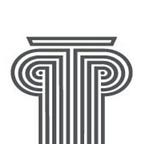These Early Reviews of Picasso’s Art are Adorably Hysteric
The thing you have to remember about any famous artist is that they weren’t always famous. And their early reviews weren’t always kind.
Before Pierre-Auguste Renoir was a French national treasure, he was “Pierre who couldn’t sell a painting.” When Joan Miró, one of the most influential artists of the 20th century, held his first solo exhibition 100 years ago, it was such a disaster that the unruly crowd actually started destroying the art.
It sometimes takes a while for society to catch up to a new artist or art movement. That was certainly the case with Pablo Picasso.
While today, Picasso is hailed as a genius, when the public first began encountering his artwork in the early 1900s, they often didn’t know what to make of it. Several art critics of the era were downright vicious in their reviews of Picasso’s artistic talents, labeling his art as “degenerate,” “odd,” and a product of “diseased nerves.”
Looking back, their over-the-top criticisms are, frankly, hilarious, because we all know the end of the story. Picasso will forever be remembered by history as one of the world’s greatest artists, even if a 1920s art reviewer just couldn’t wrap his head around the beauty of Cubism.
At the very least, it should be a relief to today’s young artists, stressing about the reviews of their new gallery show, to know that even Picasso wasn’t immune to his own era’s version of haters and trolls.
If you’re wondering just how worked-up Picasso got his critics, here is a fascinating selection of actual Picasso reviews that actually appeared in American newspapers between 1911 and 1938.
Reviews of ‘Cubists and Other Freak Fads of “Modern” Painting’
This exposé — titled “Medical Science’s Protest Against New ‘Art’” — appeared in the October 9, 1921 edition of The Washington Times (Washington D.C.).
It talks about how a group of medical professionals was trying to get American museums to stop featuring “modern” artists because their art was clearly the product of “diseased minds.”
Dr. Charles W. Burr from the University of Pennsylvania Medical School described Picasso’s “Woman at a Table” as “humbug.” Dr. Francis X. Dercum went a little further in his commentary of Cubists like Picasso, saying:
“I have seen the work of insane persons confined in asylums who lean toward art, and I will say that the drawings of these insane artists are far superior to the alleged works of art I saw at the exhibition.
“A futurist or cubist takes a canvas and throws on some green paint, then a daub of yellow and then of slush. Next he makes a few circles, smears all the colors together, adds a few straight lines and labels the whole ‘Broad and Chestnut Streets on a Sunday Afternoon.’
These so-called artists are beyond me.”
Review Blames Picasso for Making Women Less Attractive
This review from the August 13, 1922 edition of the Ogden Standard-Examiner is particularly catty about Picasso’s works. Like The Washington Times, it takes issue with the artist’s “Woman at a Table,” but you have to love the author’s borderline-hysteric subtitle:
“Women Growing Less Beautiful? If Not, Then Why Do Many Modern Artists Make Feminine Figures Heavy, Almost Formless Things, and Their Faces So Utterly Lacking in the Appealing Charm of Other Days”
If the title didn’t explain enough, the review goes on to refer to Picasso’s “Woman” as “ungainly,” “clumsy,” and “positively misshapen.”
Omaha Wonders If Picasso Will Start a Fashion Trend
Nebraska’s Omaha Daily Bee was similarly concerned about how Picasso captured a woman’s beauty.
In this attempt at a satiric piece in their December 8, 1912 edition, they wonder if Nebraskan women will start wearing mismatched stockings, odd eyes, and triangular smiles to make them look like the fashionable women in the art of “futurists” like Picasso.
How Many Times Can They Use the Word “Eccentric”?
This November 19, 1911 article from The Salt Lake Tribune is a little nicer than some of the other reviews, but it does repeatedly use the word “eccentric” to describe Picasso and the Cubists — and you can tell they’re not using it as a compliment.
The best part is the article’s subtitle: “It Requires an Odd Sort of Taste to Appreciate Their Crazy Drawing, But One Parisian Faction Hails Them as Geniuses Regardless of What Another Set Calls Them.”
The polite Utah critic goes on to offer Picasso’s “The Woman with the Fan” some extremely faint praise, saying that the painting “is not so bad as it seems at first glance.”
Reviewer Wonders If Picasso Will Literally Destroy the World
This April 17, 1938 article from Washington D.C.’s Sunday Star seemingly starts out as just a review of a new Picasso show at the city’s Phillips Memorial Gallery.
However, further down, in a section titled “Key to Understanding Picasso’s Work,” the reviewer casually mentions that Mr. Picasso might one day be responsible for the fall of Western civilization.
Here’s his calm, reasonable argument:
“… it is not unlikely that Picasso represents in one person the steady downward trend of civilization and the present dominant influences tending toward world cataclysm.
Art has always reflected life and still does; the unhappy fact is that at the present time it quite generally reflects the worst rather than the best.”
So, remember, struggling artists, if reviewers can be this mean to Pablo Picasso, please take any criticism you receive in stride. Who knows maybe one day, like Picasso, you’ll be in museums all over the world and reviews like these will be relegated to the dustbin of history?
Park West Gallery has been collecting the works of Picasso for 50 years and currently has one of the largest collections of Picasso’s ceramic works on the planet.
You can learn more about Park West Gallery on their Facebook page or watch Park West Gallery artists in action on YouTube.
